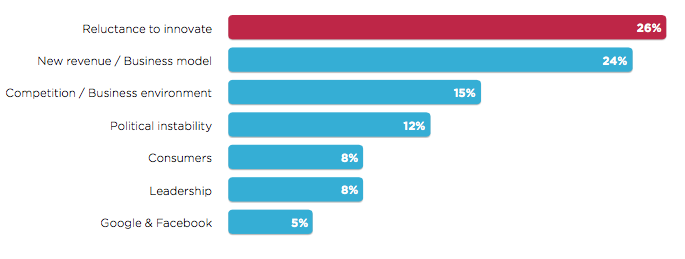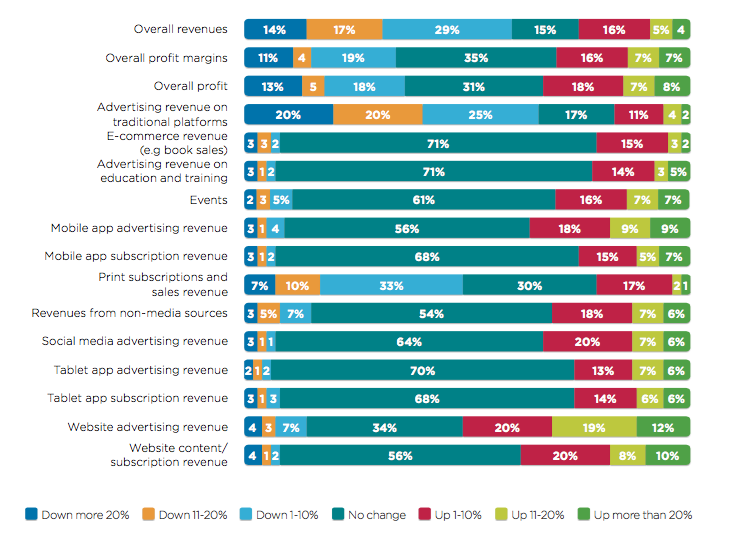
“What is the single most important risk to your news organizations’ future success?”
The top answer, according to a new WAN-IFRA report that surveyed 235 news executives and other managers working in media across 68 countries, was “reluctance to innovate,” followed by concerns over finding new revenue streams and a sustainable business model. (Only 5 percent cited Google and Facebook, though of course they intersect with the business model worries.)

Almost two thirds of those surveyed reported that revenues at their organizations have declined over the past year; about a quarter, though, reported that revenues were up (the “highest proportion of positive responses,” the report mentions, since a version of this study was first conducted in 2009 during the global recession).

The executives surveyed fell into three distinct buckets: Some were staunch defenders of a traditional, mostly advertising-driven revenue model (only eight percent of those surveyed fell into this category). Others wanted their organizations to protect existing revenue streams but also aim to earn about half their income from new sources in the next five years (56 percent of those surveyed). A third group said they wanted their companies to earn more than half their revenue from sources other than advertising and content sales (36 percent).
So what should these companies be investing in to meet those revenue goals? The report found that the top area of investment for publishers surveyed was — wait for it — video.
The top reported short-term priority for the next 12 months was investment in “social media editorial activities” (79 percent of respondents said that was “high priority”), according to the survey, followed by “developing new products within the media sector” (78 percent). There were a few sort of alarming areas executives indicated were “low priority” (80 percent, for “more diverse workforce”):

The survey was led by WAN-IFRA and François Nel and Dr Coral Milburn-Curtis of the Innovation Research Group and conducted in 11 languages across six continents: Africa, Asia, Australia/Oceania, Europe, North America, and South America. The report, which includes several guest analyses on everything from company culture change to broad-stroke ideas for dealing with revenue decline, is available here. (It’s free for WAN-IFRA members, €250 for others.)